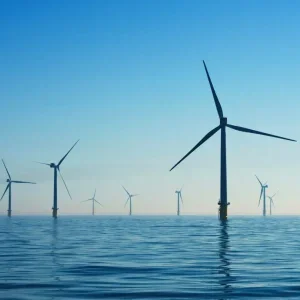Jim Jager, a spokesman for the regional Native corporation, said that the hurdles that remain include determining which electric companies will buy the power and approval of all permits.
The announcement comes as the Army Corps of Engineers launches a public review of the proposal filed by Wind Energy Alaska, a business owned by CIRI and enXco Inc.
Earlier versions of the project, first explored a decade ago by the Chugach Electric Association, called for 33 wind turbines and up to 100 MW of power.
But the towering wind turbines required to do so would be less efficient in Anchorage’s cold temperatures and sometimes moderate winds than the smaller 1.5 MW turbines, according to Jager. That cut the project down to a 50 MW wind farm.
The developers decided to cut the proposal to 20 turbines and 30 megawatts to satisfy concerns raised by the Federal Aviation Administration, which maintains an aircraft navigation signal on Fire Island.
According to the American Wind Energy Association, the wind power would provide a small fraction of the overall electricity consumed along the Railbelt. Totally 30 MW of wind power equals the annual electricity needs of about 9,000 households.
In 2008, the Alaska Legislature appropriated $25 million for construction of the seabed transmission line to carry that power into the electricity grid. The developers need to get at least a few of the utilities involved to sign power-purchase agreements before the cable can be laid.
Jager said Anchorage Municipal Light & Power, Homer Electric and Golden Valley in Fairbanks have each expressed interest in the power, and Chugach has said it is willing to transport it to the grid.
According to Chugach spokesman Phil Steyer, Chugach is also a prospective buyer of Fire Island wind power. The company is studying how the fluctuating power from a wind farm can be integrated into the Railbelt grid.
Jager said that the wind power will probably be more expensive initially than electricity generated from natural gas, since the expense is all upfront in construction costs. But in the long-run, wind power costs are stable, whereas the cost of gas-fired electricity may well continue to climb.






